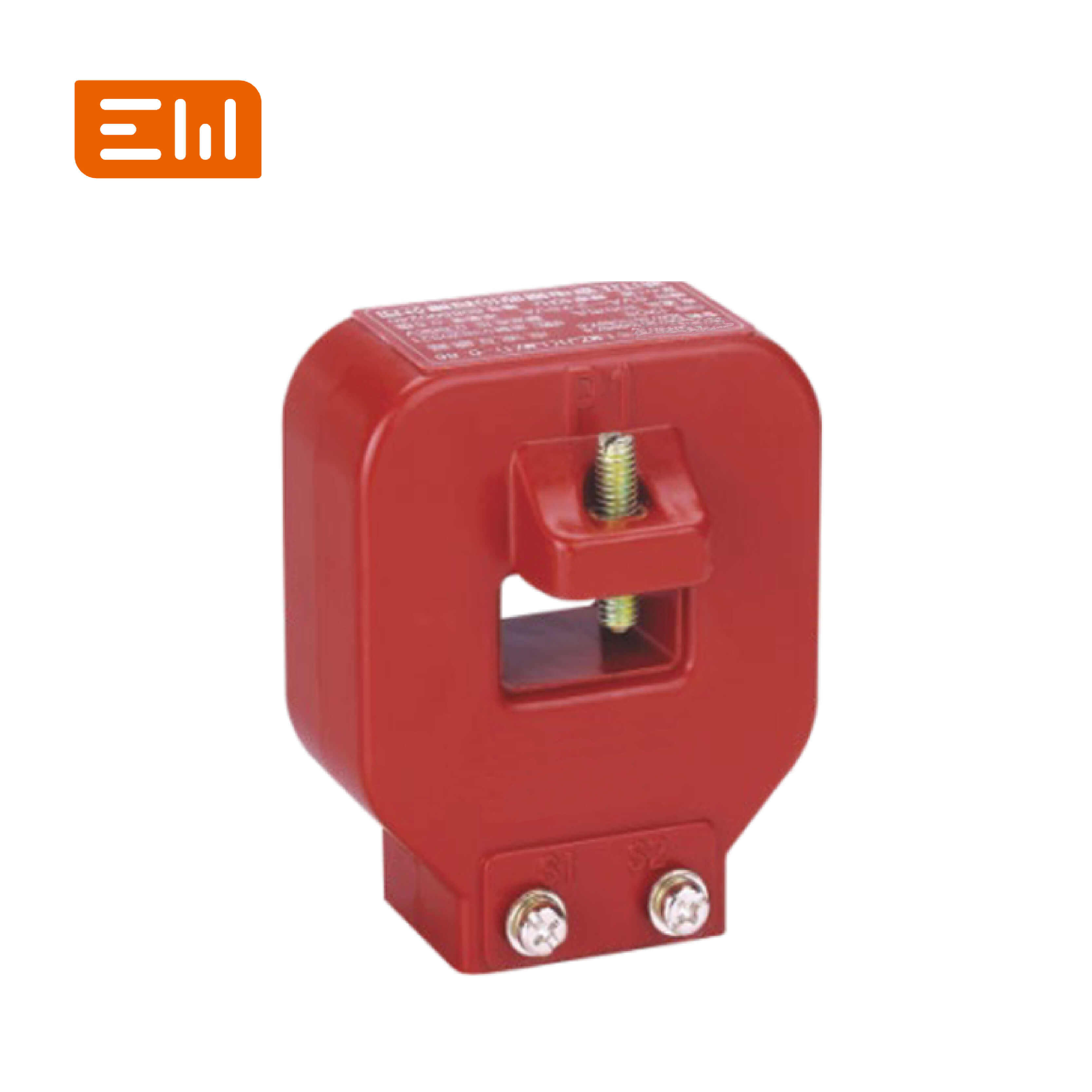Current Transformer Design Guide for Protection and Metering
Current transformers (CTs) are precision devices that translate primary currents into standard secondary values for relays and meters. Designing a CT involves balancing magnetic performance, thermal limits, and mechanical robustness to meet accuracy requirements under varying operating conditions.
Quick Definition: Current transformer design is the engineering process of selecting core materials, winding configurations, and insulation systems to reproduce primary currents accurately at a scaled secondary value.
Key Project Takeaways
- CT design must align with IEC 61869-2 and IEEE C57.13 standards for accuracy, safety, and testing.
- Core saturation, burden sizing, and thermal performance dictate CT reliability during faults.
- Enwei Electric offers engineered CTs tailored to protection, metering, and digital substation applications.
- External references from IEC, IEEE, and NERC guide specifications, testing, and maintenance protocols.
Defining Design Objectives
Designers first clarify whether the CT serves protection, metering, or dual roles. Protection CTs prioritize transient performance and high knee-point voltage to avoid saturation during faults. Metering CTs focus on accuracy across load ranges. Environmental conditions, mounting constraints, and integration with switchgear influence geometry and insulation choices.
Magnetic Circuit Fundamentals
The CT core forms a magnetic circuit that guides flux generated by primary current. Core cross-sectional area and magnetic path length determine magnetizing current and saturation characteristics. Designers use high-permeability materials to minimize magnetizing current, ensuring secondary current follows the primary waveform.
Air gaps, often undesirable, may be introduced deliberately in special CTs to control saturation. However, gaps increase magnetizing current and reduce accuracy, so they must be carefully modeled.
Standards Alignment and References
- IEC 61869-2:2012 — Provides accuracy classes, thermal limits, and test procedures. Source: IEC
- IEEE C57.13-2016 — Covers instrument transformer requirements in North America. Source: IEEE
- NERC PRC-005 — Outlines maintenance intervals for protection system components. Source: NERC
Compliance ensures CTs meet global accuracy expectations and regulatory audit requirements.
Core Design Calculations
Designers calculate core cross-sectional area using the maximum flux density allowed for the chosen material, factoring in primary current, turns ratio, and frequency. Flux density must remain below the saturation threshold under peak fault conditions.
The knee-point voltage is computed from core characteristics and turns ratio, ensuring protection CTs sustain output when secondary circuits experience high burdens. Engineers also determine magnetizing current and excitation curves to verify accuracy within specified classes.
Winding and Burden Considerations
Secondary winding design involves selecting conductor gauge and number of turns to achieve the desired ratio while handling thermal loads. Winding resistance and leakage reactance contribute to overall burden and must be minimized.
Burden calculations include connected devices—meters, relays—plus lead resistance. The total burden must remain below the rated value to maintain accuracy. Some designs incorporate multiple secondary windings for separate protection and metering circuits.
Core and Winding Material Selection
Protection CTs often use grain-oriented silicon steel or nanocrystalline materials for high saturation flux density. Metering CTs may use amorphous alloys to improve accuracy at low currents. Secondary winding insulation uses enamel-coated copper wire, supplemented with epoxy, Mylar, or Nomex layers depending on voltage class.
Mechanical design includes support structures, clamping frames, and resin encapsulation to withstand short-circuit forces. Outdoor CTs require weatherproof housings, while indoor CTs integrate with switchgear compartments.
Thermal and Mechanical Performance
CTs generate heat through copper losses and core hysteresis. Thermal modeling ensures temperature rise stays within IEC limits. Designers may use cast epoxy or oil-immersed housings to dissipate heat effectively.
Short-circuit forces can exceed several kN, especially in high-current applications. CT frames, support brackets, and insulation must resist mechanical stress to avoid deformation or insulation failure.
Testing and Validation
Prototype CTs undergo routine, type, and special tests: ratio accuracy tests, polarity checks, insulation tests, short-time current withstand, and partial discharge measurements. Excitation curves confirm knee-point voltage, while temperature rise tests validate thermal design.
Digital modeling tools, such as finite element analysis (FEA), assist in verifying magnetic flux distribution and mechanical stress before physical testing. Enwei Electric’s labs capture data to certify compliance with customer specifications and international standards.
Engineer Checklist for Current Transformer Design
- Identify application: protection, metering, or combined.
- Select core material and determine cross-sectional area to avoid saturation.
- Calculate turns ratio, knee-point voltage, and magnetizing current.
- Evaluate burden including connected devices and wiring.
- Design insulation, thermal management, and mechanical supports for operating environment.
- Plan validation testing per IEC 61869-2 and IEEE C57.13.
Enwei Electric’s CT Design Expertise
Enwei Electric manufactures medium- and low-voltage CTs with customizable ratios, accuracy classes, and insulation systems. Explore product options at https://www.enweielectric.com/products/current-transformers. Integration with switchgear (https://www.enweielectric.com/products/switchgear) and transformers (https://www.enweielectric.com/products/transformers) ensures cohesive system performance.
Engineering FAQ on Current Transformer Design
How do you prevent CT saturation during faults?
Design for high knee-point voltage by selecting suitable core material, increasing turns, and managing burden to stay within rated limits.
Can a single CT serve both protection and metering?
Yes, with dual secondary windings designed for different accuracy classes, but careful burden management is necessary to avoid cross-impact.
What design support does Enwei Electric offer?
Enwei Electric provides application engineering, ratio selection, and verification testing to deliver CTs tailored to protection or metering requirements.
Call to Action: Engineer Precision CTs with Enwei Electric
Robust current transformer design is essential for accurate measurement and reliable protection. Partner with Enwei Electric for engineered CT solutions, testing, and system integration support. Contact Enwei Electric today to accelerate your current transformer design project.
Project Applications
See real-world deployment examples and gallery highlights across Enwei Electric product hubs:
- Transformer solutions for distribution and industrial projects.
- Switchgear portfolios covering medium- and low-voltage control rooms.
- Current transformer ranges supporting precision metering and protection.
- Prefabricated substations that integrate transformers, switchgear, and panels.
Table of Contents
- Current Transformer Design Guide for Protection and Metering
- Key Project Takeaways
- Defining Design Objectives
- Magnetic Circuit Fundamentals
- Standards Alignment and References
- Core Design Calculations
- Winding and Burden Considerations
- Core and Winding Material Selection
- Thermal and Mechanical Performance
- Testing and Validation
- Engineer Checklist for Current Transformer Design
- Enwei Electric’s CT Design Expertise
- Engineering FAQ on Current Transformer Design
- Call to Action: Engineer Precision CTs with Enwei Electric
- Project Applications


